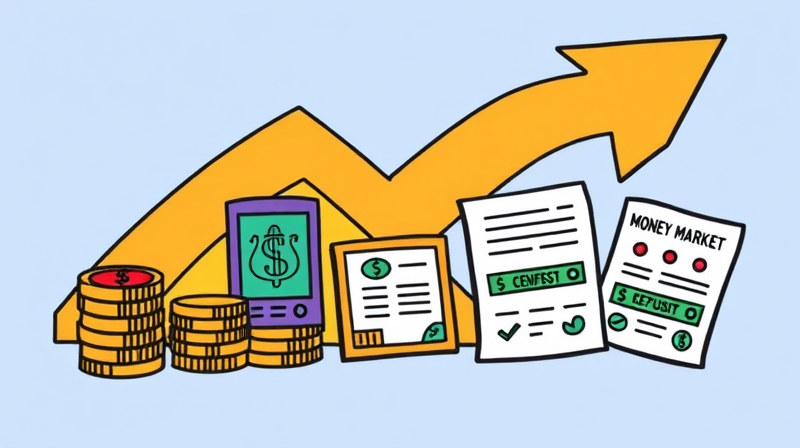
In July 2025's high-rate environment, short-term investments offer unique opportunities for safety and swift gains.
Short-term investments are financial assets held for a year or less, aimed primarily at preserving capital while earning a modest return. These instruments provide quick access to cash without exposing the investor to long-term market fluctuations.
Key features include high liquidity and low volatility. Investors allocate funds into instruments they can convert to cash in days, weeks, or months rather than years. The dual goal is maintaining principal security and capturing attractive yields near multi-decade highs in mid-2025.
Common vehicles fall into two categories: deposit-based accounts (savings, money markets, CDs) and short-duration securities (Treasury bills, corporate bond funds, government bond funds). Each type balances risk and reward differently, allowing you to tailor your approach based on specific cash needs and risk tolerance.
With benchmark interest rates elevated, even the most conservative products deliver competitive yields. Below is a snapshot of leading choices:
Investors should compare real yields after accounting for any fees or minimum-balance requirements. Deposit accounts offer unparalleled safety but may cap returns, while bond funds might fluctuate slightly with interest-rate movements.
Choosing the right mix depends on your financial goals. Short-term instruments excel at safeguarding funds earmarked for imminent expenses like a home down payment or upcoming tuition. Long-term investments thrive on compound growth but expose you to market cycles.
While these investments prioritize safety, they come with limitations. The most notable is lower yield potential compared to long-term bonds or equities. Moreover, inflation can erode real returns if rates dip in the future.
On the tax front, any profit on assets held one year or less is taxed as ordinary income. In 2025, federal brackets range from 10% up to 37%, depending on total taxable income for single filers. Municipal tax-exempt products offer potential relief for high-income investors, though yields may be slightly lower.
Tips to manage taxes include using tax-advantaged accounts like IRAs for bond funds or timing redemptions in lower-income years. Always factor in after-tax yield rather than nominal rate when comparing options.
Short-term investments suit a wide spectrum of investors:
If you value capital preservation with returns and anticipate upcoming financial outlays, allocating a portion of your portfolio to short-term instruments can provide peace of mind without sacrificing yield entirely.
By staying vigilant and proactive, you can harness current market conditions to secure modest yet meaningful gains without excessive risk. Automated alerts or periodic rate checks can help you redeploy cash quickly when maturities arrive.
In an era of unpredictable markets and shifting rate expectations, short-term investments remain a versatile tool. They offer a unique blend of liquidity, safety, and attractive returns relative to their historical norms. Incorporate them into your broader strategy to cover immediate needs, balance volatility, and enhance overall portfolio resilience.
With the right selection and disciplined execution, you can truly make your cash work smarter and faster—achieving that quick win while safeguarding your principal for whatever tomorrow brings.
References













